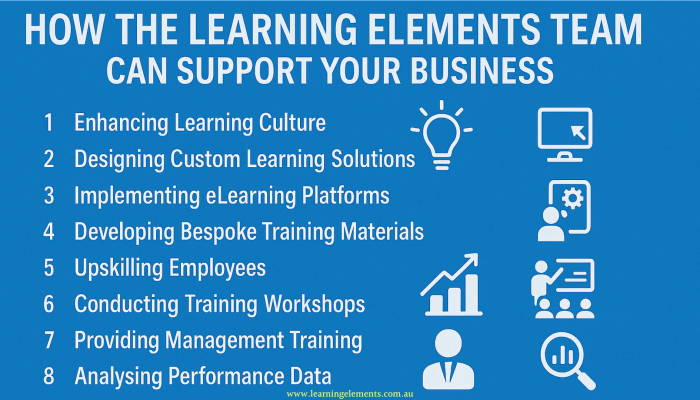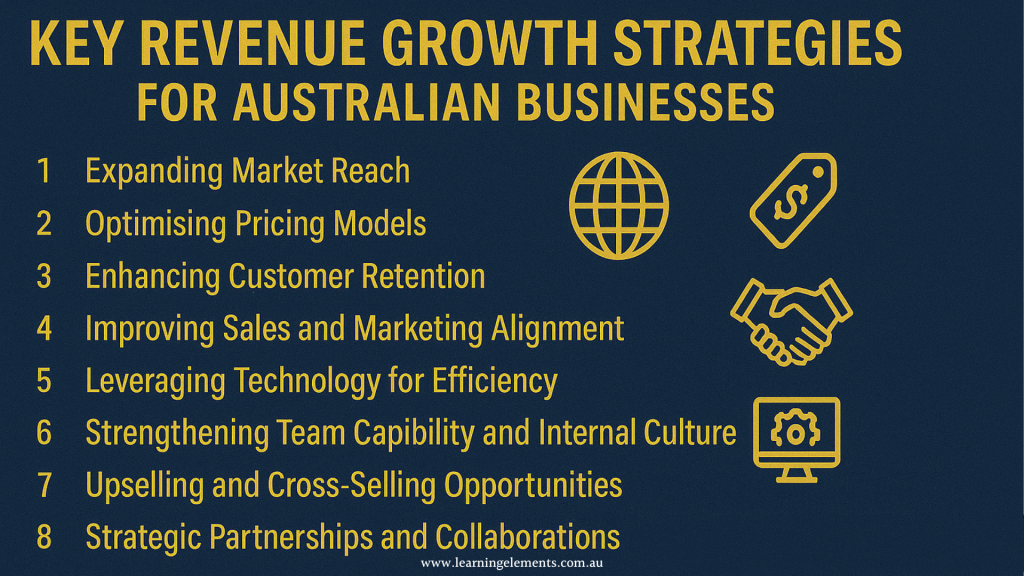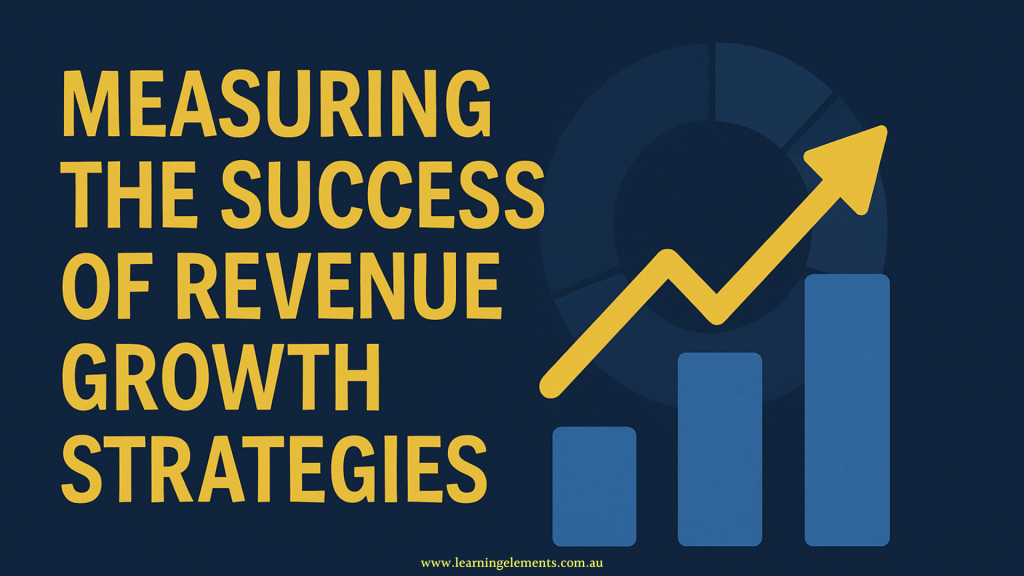Revenue Growth Strategies for Australian Businesses: Proven Approaches to Boost Business Success
Revenue Growth Strategies are essential for businesses looking to increase profitability, expand market reach, and sustain long-term success. By implementing the right strategies, companies can optimise sales, improve customer retention, and maximise financial performance. In the Australian market, businesses face a unique mix of regional competition, digital maturity, and shifting consumer behaviours. Whether you’re operating in metropolitan areas like Sydney and Melbourne or serving regional markets, applying the right Revenue Growth Strategies is important to navigating changing economic conditions, rising operational costs, and evolving customer expectations.
Understanding Revenue Growth Strategies
Revenue Growth Strategies refer to structured approaches that businesses use to drive sales, enhance customer value, and improve overall profitability. These strategies can include pricing optimisation, sales process improvements, customer acquisition tactics, and operational efficiency enhancements.
Laying the Groundwork: Understand Your Market and Customers
Before applying Revenue Growth Strategies, businesses must understand their customer base and market environment. This includes:
- Analysing customer demographics, preferences, and buying habits
- Reviewing competitor offerings, pricing, and positioning
- Identifying market gaps, customer pain points, and unmet needs
- Using tools such as customer surveys, sales feedback, and analytics platforms
Strong research ensures strategies are grounded in real data rather than assumptions. For Australian companies, using localised data — such as ABS reports, industry benchmarks, and local economic trends — improves the relevance and accuracy of your strategy decisions.
Want to go deeper into building effective growth strategies?
Learn how market research and structured planning directly impact revenue outcomes.
Key Revenue Growth Strategies for Australian Businesses
1. Expanding Market Reach
Australian businesses can drive growth by targeting untapped customer segments or geographic regions. This involves analysing market trends, customer demographics, and competitor activity to spot new opportunities. Expansion may include entering regional areas within Australia that lack access to certain services or exploring neighbouring Asia-Pacific markets. Localisation is often needed—such as language adaptation, culturally relevant messaging, or building local partnerships. It’s also important to consider regulatory compliance, especially with Australian Consumer Law and digital data obligations, when scaling operations.
Diversifying product or service offerings is another way to grow within existing or new markets. Businesses can respond to shifting demand by launching new product lines, bundling complementary services, or introducing tiered pricing models. Regular customer feedback and small-scale market testing help validate ideas before wider rollout.
2. Optimising Pricing Models
Pricing strategy plays a key role in influencing buyer decisions and improving revenue. Value-based pricing focuses on aligning product or service pricing with what customers perceive as valuable, rather than relying solely on cost-plus models. This approach requires frequent reviews of customer behaviour, competitor pricing, and market conditions to stay aligned with expectations.
To drive short-term revenue, businesses may also use tactical pricing actions—such as limited-time promotions, volume discounts, or package deals. These must be targeted and monitored to avoid undermining long-term profitability.
For more details on compliance when scaling operations, refer to the Australian Consumer Law (ACL).
3. Enhancing Customer Retention
Securing repeat business is often more cost-effective than acquiring new customers. Strong customer service helps build trust and long-term relationships, especially in competitive markets. Personalised service, timely support, and proactive communication all contribute to a positive customer experience.
Loyalty programmes can also improve retention by rewarding ongoing engagement. These may include points-based systems, tiered rewards, or exclusive offers. Well-designed programmes not only drive repeat sales but also encourage referrals and brand advocacy.
4. Improving Sales and Marketing Alignment
Sales and marketing teams must work closely to ensure leads are well-qualified and messaging is consistent. Joint planning, shared KPIs, and regular communication between teams help reduce friction and improve lead conversion. A clear alignment strategy prevents duplicated efforts, reduces delays in lead handover, and ensures a unified customer experience.
Data-driven marketing enhances lead quality by targeting specific behaviours, needs, and segments. Campaigns informed by analytics allow for better targeting, more relevant messaging, and higher engagement across digital channels.
5. Leveraging Technology for Efficiency
Technology supports revenue growth by improving the speed, accuracy, and scale of sales and marketing activities. CRM systems help businesses manage customer relationships and personalise communications based on past behaviour. AI-driven analytics can predict customer needs, segment audiences, and flag potential churn risks early.
Automating routine sales and marketing tasks reduces manual workload and speeds up response times. Tools like email automation, sales pipeline software, and lead scoring platforms allow staff to focus more on high-impact activities that contribute directly to revenue.
6. Strengthening Team Capability and Internal Culture
Revenue growth depends not only on strategy but also on the people executing it. Investing in staff training, performance development, and clear internal communication ensures teams are aligned and capable of delivering results. Culture also plays a role—organisations that foster innovation, accountability, and responsiveness are more likely to spot growth opportunities and act on them effectively.
Tip: Regular upskilling and cross-functional training help build agility across sales, marketing, and operations teams.
7. Upselling and Cross-Selling Opportunities
Once a customer is acquired, there is further opportunity to increase their value through well-timed upselling and cross-selling. Upselling involves encouraging customers to move to a higher-tier offering, while cross-selling introduces them to complementary products or services.
This requires a solid understanding of each customer’s goals and pain points. Tailored product recommendations—delivered at the right time—can improve both customer satisfaction and revenue per transaction. Training frontline teams and using purchase history data can make these efforts more consistent and effective.
8. Strategic Partnerships and Collaborations
Collaborating with other businesses can help scale revenue by expanding offerings, entering new markets, or leveraging partner resources. Strategic alliances—whether with suppliers, distributors, or service providers—can help Australian businesses grow more efficiently. When done right, partnerships reduce risk, share costs, and expand customer reach faster than going it alone.
Example: A software provider partnering with a local consultant to offer implementation services alongside its product.
Ready to Strengthen Your Revenue Strategy?
If you’re looking to apply these strategies effectively in your business, our specialists can help tailor a plan based on your goals, market, and current performance.
Common Challenges in Revenue Growth
Even with clear strategies, businesses often face challenges that slow or limit revenue growth. Some of the most common include:
- Inconsistent sales processes or unclear value propositions
- Lack of alignment between marketing and operations
- Limited understanding of customer pain points
- Underinvestment in staff development or technology
- Difficulty scaling processes or offerings efficiently
Identifying these barriers early allows businesses to adjust their approach and apply solutions that are practical and measurable.
Measuring the Success of Revenue Growth Strategies
Tracking performance metrics helps businesses refine their Revenue Growth Strategies and ensure long-term success. Using relevant KPIs allows teams to monitor progress, identify problems early, and adjust tactics as needed.
- Sales Growth Rate – The percentage increase in revenue over a specific period (monthly, quarterly, or annually). A steady growth rate of 10–20% per year is a good target for most established businesses. Early-stage startups may aim for higher figures (25–50%) to achieve traction.
- Customer Lifetime Value (CLV) – The projected revenue a business earns from a customer over their full relationship. For example, if the average customer spends AUD $500 per year and stays for 4 years, the CLV would be AUD $2,000. Businesses should aim to increase CLV through upselling, retention, and service expansion.
- Customer Acquisition Cost (CAC) – The average cost to acquire one customer. Divide total acquisition spend (ads, marketing, sales) by the number of new customers. A healthy CLV:CAC ratio is at least 3:1 — meaning for every AUD $1 spent acquiring a customer, the business should earn $3 or more.
- Profit Margins – The percentage of revenue that remains after all expenses. Benchmark margins vary: service businesses often have higher margins (15–30%) compared to product-based businesses (5–15%). Improving margins often comes from better pricing, cost control, and automation.
- Retention Rate – The percentage of customers who continue purchasing over a given period. High-performing businesses may have retention rates over 80%, especially in subscription or repeat-purchase models.
Tip: Monitor these metrics monthly and use historical comparisons to detect trends.
- Measuring Sales Performance: Understanding Key Metrics and KPIs to Track Sales Performance and Evaluate the Effectiveness of Transformation Efforts
- Sales KPIs That Drive Growth: A Practical Guide for Business Leaders
FAQs
1. What is the most effective Revenue Growth Strategy for Australian small businesses?
There is no one-size-fits-all solution, but small Australian businesses often see quick wins from improving customer retention, optimising pricing, and targeting niche local markets with tailored offerings.
2. How do I measure the ROI of a revenue strategy?
Track both short-term and long-term KPIs like Sales Growth Rate, CLV, CAC, and profit margins. ROI can be calculated by comparing the cost of implementation against the net revenue increase over time.
(See our related article on Measuring Sales Performance for more on KPIs and ROI calculation.)
3. Can technology alone improve revenue growth?
Technology can help improve revenue, but it should be part of a broader strategy. CRM systems, automation, and data analytics can improve sales processes, customer engagement, and decision-making when aligned with business goals.
4. How often should a business update its revenue strategy?
Review strategies quarterly, with a detailed evaluation at least once a year. Market conditions, customer behaviour, and business goals evolve, so regular adjustments keep strategies effective.
5. What role does staff training play in revenue growth?
Staff training improves sales performance, customer interactions, and operational efficiency. Skilled teams are better at identifying growth opportunities and executing strategies effectively.
Conclusion
Implementing the right Revenue Growth Strategies ensures businesses remain competitive, improve profitability, and scale effectively. By focusing on customer retention, sales process optimisation, and data-driven decision-making, companies can better respond to market conditions, maximise customer value, and allocate resources more efficiently. These strategies don’t just drive short-term gains—they lay the groundwork for consistent, long-term success.
Whether you’re a small business looking to expand into new regions or an established company aiming to improve margins and performance, aligning your growth strategy with real market data and clear execution plans will help you stay ahead in a competitive environment.
How Learning Elements Can Support Your Revenue Growth
At Learning Elements, we offer customised training and coaching solutions to help businesses develop and implement effective Revenue Growth Strategies. Through our instructor-led, self-paced, and online training programmes, we equip teams with the skills needed to enhance sales performance and drive sustainable growth.
We work with Australian businesses across industries and regions to align training with revenue goals and market needs. Want to accelerate your revenue growth? Contact us to develop a tailored strategy for your business.
Sources
- Australian Competition and Consumer Commission (ACCC) – About the ACCC
- Australian Government (The Treasury) – Consumer information
- Australian Government – Australian Consumer Law




